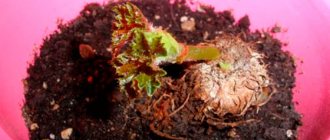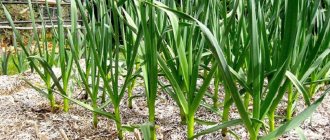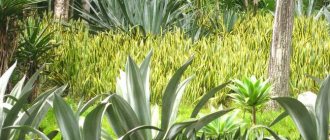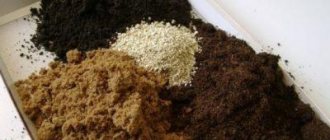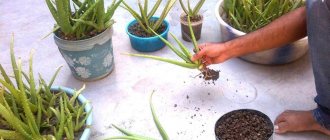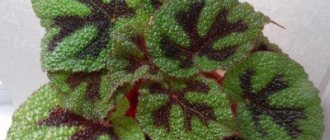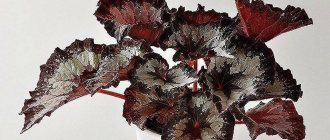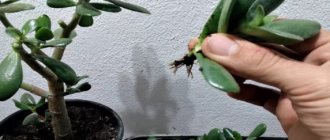Mother-in-law's tongue flower, which is easy to care for at home, feels comfortable in any apartment or office space.
It attracts attention with decorative bright green leaves that look like a pike tail. Hence the second name of the houseplant. This unpretentious succulent can have different colors and shapes depending on the species. Let's look at how to care for a flower and what signs and superstitions are associated with it/
Description of the plant
The scientific name of mother-in-law's tongue is Sansevieria. However, people call it differently:
- pike tail;
- Snake skin;
- devil's tongue
- leopard lily;
- dragon tongue;
- Hindu sword;
- Sansevieria.
The houseplant mother-in-law's tongue is a succulent with a powerful root system ending in hard basal leaves. Its homeland is the subtropics; it grows naturally on the coasts of Asia, America, and Africa. In total, about 55 varieties of Sansevieria are known, and about 10 species are bred at home. Depending on the variety, the crown with sharp, elongated leaves can reach up to a meter in height.
Some types of sansevieria have a waxy coating on the leaves, while others have foliage with a variety of spotted colors. The houseplant pike tail blooms with greenish-white stamens collected in small inflorescences on a long peduncle.
When flowering, you can smell a noticeable vanilla aroma. Fruiting at home is rare. In the photo below you can see how mother-in-law's tongue blooms.
What does the flower symbolize?
Pike tail is a very persistent, hardy and unpretentious plant. Due to the special properties of sans, in many countries it is considered a symbol of longevity, health, intelligence, prosperity, and self-sufficiency. In China, sansa is revered because it is believed that 8 gods bestow 8 qualities on the owner of the flower.
In addition to the well-known popular name, Sansevieria has several popular names in other countries:
- Indian sword;
- Snake skin;
- devil's tongue
- leopard lily;
- African hemp.
Each nickname characterizes special properties or features of the plant's appearance.
Popular varieties
The mother-in-law's tongue flower is loved by many for the decorative colors of its large leaves. Depending on the variety, the foliage can be yellow-green, spotted, with white, brownish or light green shades. Also, the leaves of different species can be long, flat, thick, round, sword-shaped or wide. Sometimes the foliage does not grow upward, but blooms in different directions or spreads along the ground.
The following varieties of Sansevieria are considered the most popular in indoor floriculture.
- Three-lane. It is distinguished by medium-width dark green leaves, along the sides of which there are yellowish stripes.
- Liberian. Dense and wide dark green leaves (usually six in number) are slightly curled at the base and have light green streaks on the sides.
- Pick. The rosette consists of thin dark green leaves covered with white speckles and a brown frame.
- Graceful. Dense greenish-gray leaves grow from a dry stem and have light streaks.
- Duneri. About 20 thin, pointed leaves grow from the rosette, reaching a height of up to 40 cm.
It is important to know. Regardless of the species, all sansevieria do not like it if the tip of their leaf is broken off. After this, the growth of the leaf plate slows down, it may dry out or turn yellow.
Sansevieria species
There are up to 70 types of flowers in nature, but up to a dozen varieties are popular in indoor floriculture. Moreover, flower growers use for this plant not only the classification of variety (species), but also such a concept as a sport plant. This is the name given to varieties that have significant deviations from the species, but they are not a new variety.
Conventionally, all types of Sansevieria can be divided into two varieties: plants with long vertical leaves and plants with short wide leaves forming a rosette. The most popular species is Sansevieria three-lane.
Three-lane
This species is characterized by tall, flat, dark green leaves with transverse light stripes, unevenly distributed. The width of the leaves reaches ten centimeters in length, and they can grow over a meter in height. The leaves taper towards the top, and there is a small spine at the end of the leaf. In nature, this species is distributed in the desert regions of the African continent.
This may be interesting: Pachypodium - home care
Laurenti
Its long leaves, in addition to transverse light stripes, have a yellow edge. The intensity of the color depends on the lighting. With a lack of light, the stripes fade. This type of Sansevieria became the basis for the development of new varieties.
Big
Lanceolate-shaped leaves grow up to sixty centimeters, reaching a width of fifteen centimeters. Transverse stripes of a malachite hue are combined with a reddish border along the edge of the sheet. The flowers are located on a long peduncle in the form of a brush and have a greenish-white color.
Cylindrical
The leaves of this plant species are cylindrical in shape, decorated with vertical silver-white stripes and yellow streaks. The ends of the leaves are narrowed and sharp. To avoid accidental injury, at home, cork caps are placed on the tips of the leaves. The flowers of the cylindrical Sansevieria are creamy white with reddish streaks.
It is necessary to note the types of Sansevieria that have become popular in recent years. Flower growers, both professionals and amateurs, are attracted to decorative low-growing varieties. These include the following types.
Hanny
The dark green leaves are shorter than the Laurenti species. The wide leaves form a rosette resembling a vase.
Golden Hunny
It differs from the previous species (Hanni) in the presence of golden-yellow stripes on the leaves, unevenly located.
Silver Honey
This plant is a sport of the Sansevieria hanni species and has leaves of a different color. They have silver-gray shades with vaguely defined transverse stripes.
Futura
It belongs to the new varieties, differing from the Sansevieria Laurenti variety in short and wide leaves. The yellow stripe along the edge of the leaves is narrow.
Moonshine
This species also belongs to the new varieties and is similar to Sansevieria Futura in leaf shape. But it differs in the gray-green color of the leaves with a silver tint.
Compacta
The short, thin, dark green leaves have a yellow stripe along the edges. A characteristic feature of the variety is that the leaves curl slightly, giving the plant an unusual appearance.
Selection of location and conditions of detention
A succulent accustomed to harsh natural conditions feels at ease in any apartment or office. The only thing you should remember is the love of mother-in-law’s tongue for warmth, light and moderate watering.
- Lighting and location. The flower is considered light-loving, but also feels comfortable in partial shade. It is better to place pots on east or west windows. On southern windowsills you will have to shade the flower from direct sunlight. With a lack of lighting, the decorative effect of variegated specimens decreases.
- Temperature. The plant can be kept at a room temperature of 16-25°C. The pike tail tolerates heat well and can withstand cold temperatures down to 5-7°C indoors.
- Air humidity. Sansevieria feels best in an atmosphere of dry air. In the summer heat, it is advisable to spray the flower with water from a spray bottle and wipe the leaves with a damp cloth. Also in summer you can take the flower out onto the balcony, into the garden, and keep it outside until September.
- Suitable soil. Suitable for growing are either purchased universal soil for succulents, cacti or decorative foliage plants, or prepared independently. For planting, you can mix 2 parts of turf with 1 part peat and 1 part sand in a container. Drainage made of expanded clay, pebbles or clay shards should be poured into the bottom of the pot.
- Potty requirements. The powerful roots of the mother-in-law's tongue spread out to the sides, so the pot must be stable, heavy, wide and shallow. Ceramic or clay, plastic with thick walls will do. When replanting, take a container 2-3 cm wider than the previous one, deepening the leaves as shown in the photo below.
Sansa's toxicity
This succulent contains saponins - controversial substances that are used in small quantities for medical purposes, for example, saponins are used in the production of laxatives, choleretic, and anti-inflammatory drugs. However, in higher doses they turn into poisons.
As a rule, such chemical elements are used with caution for the treatment of diseases; products containing them are not prescribed to children and pregnant women. But if you follow the recommendations and do not consume the plant or its juice in its pure form, you can achieve positive results.
When applied externally, succulent juice is a therapeutic agent, but if taken undiluted orally, it causes intoxication. If there are cats in the house that like to periodically “feast” on vegetation, eating a pike tail can lead to the development of dermatitis, intestinal disorders, and vomiting. The same thing happens if a dog chews a flower.
Symptoms of intoxication
You can find out if an animal has been poisoned by Sansevieria by the following signs:
- Due to the burning and sore throat, the pet begins to cough, trying to cough up.
- Dyspeptic disorders occur: nausea, vomiting, diarrhea, profuse salivation.
Usually, adults do not think of the idea of trying homemade flowers. But you can’t vouch for children 100%; they are still inventors. The consequences will be very unpleasant sensations, including burning and profuse salivation.
Security measures
And in order to completely eliminate the possibility of poisoning, flower growers who have this succulent at home should not forget about the following precautions:
- All manipulations that require contact with the plant must be performed with gloves.
- It is important to ensure that the succulent juice does not get on the skin, mucous membranes, especially the eyes.
- If the juice does get on the skin or organ of vision, they should be washed with plenty of water.
- It is recommended to dispose of the cut parts of the flower immediately.
- You can protect small household members and living creatures by placing the flower where access to it is difficult.
First aid for poisoning
As with other types of intoxication, at the first alarming symptoms you should provoke vomiting in the poisoned person. And after cleaning the stomach, the patient is given an adsorbent drug - activated carbon, Polysorb, Enterosgel or another.
If the poisoning is so severe that conditions such as weakness, drowsiness, pain in the peritoneum, and nausea occur, then it is recommended to seek medical help, especially if we are talking about a child. Doctors should be sure to report which plant caused the intoxication; this will help to correctly carry out the necessary emergency measures and prescribe appropriate therapy.
There is a misconception that if a toxic substance enters the body, it can be neutralized with milk. Unfortunately, this method not only does not work, but can also be harmful - milk can intensify intoxication processes and reduce the therapeutic effect of medications.
Home care
Caring for an undemanding indoor flower consists of regular watering, loosening the soil, replanting as it grows, and applying fertilizer. The smaller the flower, the easier it is to care for it, however, large specimens grow well on windowsills even for inexperienced gardeners.
- Watering. The succulent does not need frequent watering; overwatering and stagnation of moisture in the pan cause rotting and the appearance of fungal diseases. In summer, it is enough to water the soil once a week as it dries; in winter, one watering per month is enough. The water should be at room temperature. Do not allow moisture to enter the leaf rosette.
- Feeding. The flower grows well even without fertilization. Fertilizing allows you to enhance leaf growth and improve the decorative appearance of the plant. From May to September, once every 2 weeks you can fertilize it with liquid mineral additives containing phosphorus, potassium, and nitrogen.
- Loosening. The plant prefers to grow in loose, well-permeable soil for cacti or succulents. You can’t loosen it too much; you can damage the numerous roots near the surface. Mother-in-law's tongue also does not require mulching to retain moisture.
- Trimming. The flower does not need formative pruning; it is also better not to pluck or trim leaves that have dried out for various reasons.
- Transfer. There is no need to replant the pike tail often; on average, it is enough to carry out the procedure once every 3 years. However, sometimes replanting is necessary if there is rapid thickening with new shoots or the container is completely filled with roots, and they crawl to the surface into the drainage holes of the pot. The plant is replanted in the spring, from March to April, completely replacing the soil in the container and separating the daughter shoots.
It is important to know. In winter, the plant should not be allowed to touch the cold window glass with its leaves - this will lead to frostbite and death.
Sansevieria propagation
If the time to plant mother-in-law's tongue was in the spring, you can combine this procedure with propagation. During this period, all biological processes are proceeding at an accelerated pace; the active movement of juices will help the plant take root faster.
Novice gardeners are interested in the question of how Sansevieria reproduces. This activity is carried out in several ways:
- division of rhizomes;
- cutting off side shoots;
- fragments of a leaf plate.
The latter option does not allow preserving the color of some types of pike tail, but the method still remains popular. This method is especially good if the root system has become sick and unusable.
Preparing for transplant
Leaf
You can also use the propagation of Sansevieria by leaf in the case when an already formed plate breaks off. At the same time, mother-in-law’s tongue can be rooted both in the soil and in a cylindrical container with water.
Sheet plate selection
To propagate Sansevieria, well-ripened and fully developed plates should be selected. The planting material should be from a faded rosette that is no longer capable of forming new leaves. The best option is the bottom leaf without signs of disease, various types of damage, or traces of parasitic individuals.
Preparing the shoot for rooting
A sheet of “mother-in-law’s tongue” cut with a sharp and disinfected knife should be divided into several fragments 7-15 cm long. Here it is important to remember where the upper and lower parts are. The blanks need to be given time to dry - 2-3 days will be enough. Only then can you root them in water or in a suitable soil substrate. The leaf blade must be cut perpendicular to the veins.
If you immerse the top of a leaf cutting into the soil, due to the disturbed direction of movement of the juices, it will not be able to form roots and will die.
The number of cuttings directly depends on the number of planned new flowers. To make the procedure successful, it is worth making a few more preparations, then the chances of a new green pet appearing will be higher.
This is interesting: What to do if ficus leaves turn yellow and fall off: we eliminate the problems
The soil
In order for Sansevieria to take root, propagation by leaf is carried out in a soil other than that intended for replanting the flower. In this case, the loose substrate should contain components in the following proportion:
- 1 part of sand and humus;
- 2 parts each of turf and leaf soil;
- The presence of charcoal is required.
Another composition is also suitable for propagation: from leaf and turf soil with the addition of perlite (all ingredients are taken in equal parts). The soil must be sterile (calcined) and moist before planting.
Choosing a pot: material and size
For sansevieria, a clay or ceramic pot is considered the most suitable. Clay is an environmentally friendly substance, has excellent breathability, thereby providing air access to the roots, and absorbs moisture well, providing additional drainage. Pots made of clay and ceramics are quite stable, and this is an important factor for such a tall plant as mother-in-law’s tongue. In addition, containers made of clay and ceramics are durable; they can withstand the pressure of the powerful roots of Sansevieria on the walls.
Attention! The pot must have holes in the bottom to drain excess water, and the bottom of the pot must be covered with a layer of drainage, which can be expanded clay, broken brick, or pebbles.
We recommend replanting adult plants in ceramic pots . They are stable and strong enough to withstand the pressure of the powerful roots of the “mother-in-law’s tongue”.
There should also be holes at the bottom of the pot to allow excess water to drain out. Drainage during planting is required. You can use expanded clay and ordinary pebbles as it.
This plant does not need a large pot. Moreover, the likelihood of lush growth and flowering is much higher if the roots of sansevieria are in cramped conditions.
However, given that the roots of the plant grow not deep, but wide, we recommend choosing a wide, durable container .
Agricultural technology
To know how to properly propagate sansevieria by leaf, follow the step-by-step instructions. At the same time, despite the general aspects, there are differences in earth and water rooting.
Leaf propagation
First perform the following actions:
- cut a healthy, undamaged leaf from the mother bush;
- the plate is cut into strips of 10-15 cm, moving with a sharp knife perpendicular to the veins;
- On each fragment, the bottom and top are marked with a marker (this is important when planting).
Important! If part of the plate is buried in the ground or lowered into water with the wrong cut (against the flow of juices), you may not expect roots.
Peculiarities of propagation of Sansevieria by leaf
| In the ground | In water |
|
|
Planting leaf parts directly into the substrate is preferable - rooting will occur faster (in 1.5-2 months). New shoots from the leaf can be expected in 7-8 months. For this to happen, optimal conditions are maintained:
- air temperature – within 21-25°;
- luminous flux - only diffused;
- substrate – moderately moistened (watering through a tray).
Note! When propagated by leaves of mother-in-law's tongue, some gardeners practice the greenhouse effect. It is undesirable to do this - due to increased humidity, the cuttings may rot.
Reproduction of Sansevieria by dividing rhizomes
The easiest and most affordable way. Overgrown plants are simply divided into separate rosettes. Propagation by division can be combined with a planned transplant, during which the rhizome is cut into several viable parts.
Growing Sansevieria from seeds
Seed propagation of “pike tail” is used quite rarely. Its seeds cannot be found on the open market. But you can try to get them from your own plant. Fruit pods. Immediately after collection, they are dried, and the seeds themselves are removed immediately before sowing.
To plant them, use wide containers filled with wet sand. After sowing, they are covered with a plastic bag and placed in a warm, well-lit place. Germination may take several months.
Why remove the growing point of Sansevieria?
The goal of propagation is not just to get a new plant, but also to preserve all its characteristics. Not every method satisfies this desire. In varieties with variegated leaves, color can only be preserved by propagation by layering.
The older the plant, the less likely it is to get planting material from it. After 5 years, the flower practically does not form root layers. To stimulate the queen cell to develop, you need to carefully cut out (not twist) the growth point and remove the top 2-3 leaves.
Sansevieria with layerings
The plant will immediately redirect its forces to the development of the rhizome; after 1.5 months, several good layering will develop on the bush. They are cut off and planted in pots. After this, an adult Sansevieria can grow for several more years (until the foliage dies).
Reproduction methods
There are several ways to propagate mother-in-law's tongue. Moreover, monochromatic varieties are propagated by cuttings, shoots or dividing the rhizome, while variegated varieties are propagated only by dividing the root into parts.
- Leaf cuttings. The leaf is cut into pieces, the pieces are inserted into moist soil, and rooted. The procedure is carried out in the spring.
- Rhizome division. The plant is removed, the root system is cleared of soil, and the root is divided into 2-3 parts. Make sure that each one has a growth point. The sections are sprinkled with crushed coal. The cuttings are planted in the soil and moistened.
- Reproduction by shoots (shoots). The children are separated from the mother plant with a sharp knife, making sure that part of the root remains, and are planted in pots.
Reproduction
Sansevieria can be propagated by lateral layering, dividing the rhizome or leaf cuttings.
Side shoots are developed mainly in low-growing rosette plants. It is better to plant them in the spring when transplanting the mother plant. To do this, use a sharp knife to carefully cut off the shoot, capturing part of the rhizome. The separation points on the mother and young bushes should be sprinkled with powder made from activated carbon. After this, it is enough to place the plants in separate pots. In order for sansevieria to take root faster, it is better to keep it warm with moderate watering.
Rhizome division is the most preferred type of propagation of the “mother-in-law’s tongue” flower. With this method, all species characteristics of the plant are preserved. The rhizome is separated in early spring from an adult plant. Remove the sansevieria from the pot, disinfect the knife, and divide the root into 3-4 parts depending on the size. Each division should have its own growth point. Treat all cuts with crushed coal, then plant the plants in a sandy substrate. Rooting takes place with moderate watering. If you did everything correctly, the plant will have new shoots, and when this happens, you can transplant the young bushes into a new pot.
Tall species of sansevieria of uniform color are propagated by leaf cuttings. Species characteristics, however, are not preserved - the plants will be monochromatic and without stripes. Take an old strong leaf, disinfect a knife or pruning shears, cut the workpiece into several pieces 4–5 cm long and lay them out in the direction of leaf growth so as not to forget where the top and bottom are. The cuttings need to be air-dried for 24 hours or treated with crushed activated carbon. Then plant the sections with the bottom part in wet sand for about a third of the length. In order for the cuttings to take root better, they need to be covered with a glass jar, pour water into the pan and put in a warm place. Rooting will take 1–1.5 months.
Landing rules
Planting with seeds is practically not used, but if they exist, you can sow them, cover them with film, and place them in a warm place. Shoots will appear in 2-4 weeks. After germination, the seedlings are plucked, and when they become stronger, they are planted in separate pots.
Planting a purchased or perennial plant is done by transplantation.
- The pot is selected according to size.
- Buy or prepare the soil yourself.
- Pour drainage onto the bottom of the container and a layer of soil.
- Place the plant, sprinkle the sides with earth, lightly tamp with your fingers.
- Water and place the pot in its permanent place.
Mother-in-law's tongue is a wonderful air purifier
Even if we do not use infusions and decoctions from this plant and it is simply present in our room, then in this way it improves our living conditions. The thing is that mother-in-law's tongue is recognized as a very effective natural filter for purifying indoor air; it is simply a champion in oxygen production.
The plant is able to absorb harmful radiation from TV and computer. Sansevieria has a positive effect on office employees working at computers, improving their well-being and ability to work. The leaves of the “dust collector” should be cleaned of dust at least occasionally so that this ideal filter does not stop working.
Diseases and pests
Sansevieria are resistant to pests and diseases, but heat and dry air reduce resistance to thrips, spider mites, and mealyworms. Insects are fought with soap or tobacco solution, spraying with Fitoverm, Actellik, Decis.
It is important to know. The plant can become sick if it is not taken care of in a timely manner or due to frequent watering. The signal will be yellowing or dropping leaves, the appearance of spots due to sunburn or waterlogging.
Signs and superstitions associated with the flower
There are many signs associated with the mother-in-law's tongue flower. Basically, they are associated with the medicinal properties of the plant. Sansevieria is known for:
- absorbs negative energy;
- purifies the air in the room;
- destroys harmful bacteria and microbes;
- absorbs dust particles;
- helps normalize metabolism;
- helps treat colds, headaches, and combat pressure changes.
The main negative signs are associated with the saber-shaped leaves. Some believe that the flower can bring scandals and conflicts into the family. There is also a superstition that sansevieria blooming in winter means trouble.
Most of the signs are interpreted positively:
- the pike tail absorbs the negative energy of the home, emitting positive and calming energy;
- summer flowering symbolizes good luck in business and new beginnings;
- the appearance of a flower in the apartment helps to improve relationships in the family;
- if a person is sick, he needs to touch the leaves of sansevieria - this will help drive away the disease and feel an influx of strength;
- mother-in-law's tongue helps get rid of loneliness, you must have it to find your soul mate;
- By buying (or better yet, stealing) a flower, you can increase your career growth, improve your memory and gain a sense of self-confidence.
Is it possible to keep a pike tail at home according to signs?
There are many positive and negative signs and superstitions about a beautiful indoor flower. Most folk signs contradict each other, and the negative influence of sansevieria is greatly exaggerated. Perhaps it is for this reason that flora lovers do not like it.
The imposed reputation of piketail as a flower with heavy energy and a husband-growing plant is currently not supported by facts. Whether to grow pike tail in the house or not is something everyone decides for themselves. Experienced florists, when asked whether it is possible to keep a pike tail at home, clearly give a positive answer, however, when growing sansevieria at home, it is advisable to adhere to certain rules.
Reviews and advice for flower growers
The indoor flower mother-in-law's tongue, thanks to its properties, makes home living conditions more comfortable. Reviews indicate that the plant really helps cope with fatigue, produces oxygen, and accumulates negative energy.
In order for a decorative or plain “green friend” to please you with its healthy appearance longer, you must follow several rules of care, cultivation and maintenance at home.
- You should only water your mother-in-law’s tongue with settled water at room temperature, pouring it not into a pot, but into a tray.
- It is better if the water for irrigation is rain or distilled.
- The plant will begin to bloom only in a wide but tight container, when the roots completely fill the entire volume of the pot.
- If you use self-prepared soil when planting, it must be calcined or spilled with a solution of potassium permanganate.
- For better rooting of leaf parts, you need to moisten the soil and cover each piece with a glass jar or cut plastic bottle.
By following simple rules of care, you can grow beautiful ornamental plants of any variety, decorating your apartment, office, hospital corridor or school classroom with them.
The value of “pike tail” in folk medicine
On the one hand, it is a poisonous succulent, and on the other, sansevieria has beneficial properties. It can replace some medications, as it is not inferior to them in effectiveness.
This plant contains a complex of unique elements:
- hemolytic sapogenin;
- several types of organic acids;
- saponins;
- abamagenin;
- essential oils.
This composition makes the succulent a universal healing agent that has a beneficial effect on the organs and systems of the body. The use of traditional medicines with this plant allows you to achieve the following results:
- liquefy and remove mucus produced during colds;
- reduce inflammation, preventing its spread to nearby tissues;
- accelerate the healing process of tissues and mucous membranes;
- provide a choleretic effect;
- eliminate pathogenic fungi and viruses;
- increase sweating to more quickly remove poisons, toxins, salts, and excess water from the body;
- provide a diuretic effect;
- relieve pain;
- normalize the functions of the central nervous system;
- improve the functioning of the gastrointestinal tract;
- eliminate bleeding;
- stimulate the immune system, tone, increase the body's protective properties.
Studies have shown that people who have this succulent in their homes have higher immunity and resistance to stress and colds.
In folk medicine, sansevieria is often used to treat inflammation of the bladder, ovaries and fallopian tubes, boils and other suppurations, otitis media, colds, flu, stomatitis, runny nose, and digestive system ailments. Compositions prepared from the plant are used to treat acne and eliminate skin imperfections - redness, dryness, dullness, and oily shine.
Sansevieria is also used in cosmetology and is included in various products intended for body and hair care.
But in order to avoid intoxication and at the same time receive the possible benefits of the healing succulent, it is recommended to adhere to the recipe for preparing the product and be sure to follow the dosage.
Traditional medicine “favors” mother-in-law’s tongue and confirms that it has medicinal properties, but what does folk wisdom say about this exotic flower?
